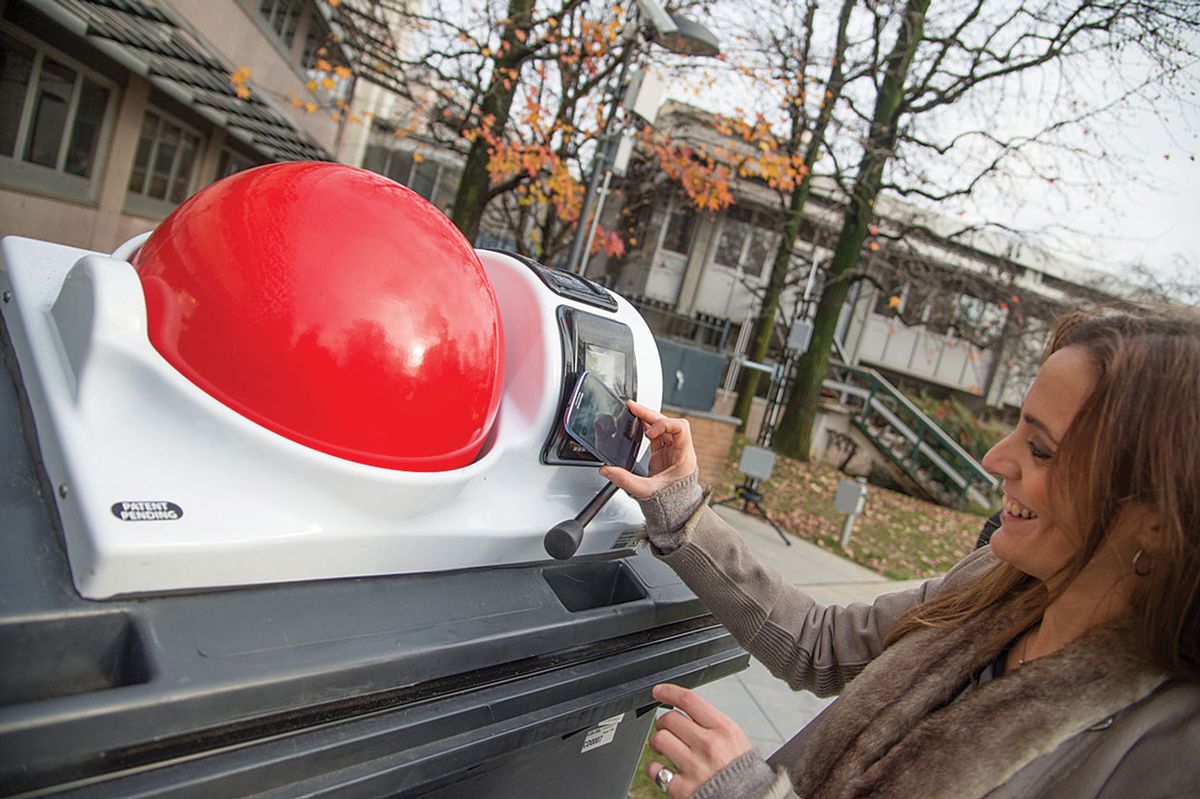Telecom Italia, Italy’s largest telecommunications provider, is putting the finishing touches on a new wireless network for the Internet of Things that should be available nationwide by the end of January.
The Internet of Things (IoT) is a catchall term for many kinds of connected devices—such as sensors, speakers, and cameras—found in cities, factories, and homes. These devices often don’t need as much bandwidth as smartphones, but connecting them through existing LTE networks is expensive.
In order for the IoT to catch on, telecommunications companies believe those devices need their own dedicated wireless networks. Two new types of networks—called Long Term Evolution for Machines (LTE-M) and Narrowband–Internet of Things (NB-IoT)—are now being deployed for that purpose. Both are designed for low-power devices that send only a few bits of data at a time.
Unlike Wi-Fi, these networks operate in licensed cellular spectrum where there is minimal radio interference. They also provide coverage over tens of kilometers, much farther than local wireless access points or short-range technologies such as Bluetooth and Zigbee.
Specifications for LTE-M and NB-IoT were released in 2016 by the standards body called the 3rd Generation Partnership Project. Since then, carriers have rolled out 28 nationwide LTE-M and NB-IoT networks across 21 countries, including China, Germany, Ireland, Spain, Turkey, the United States—and now, Italy.
“We’re getting launch announcements pretty much on a daily basis now,” says Svetlana Grant, IoT program director for GSMA (Groupe Spéciale Mobile Association), a mobile industry group that helped develop the specifications.
Upgrading an existing LTE network to support LTE-M and NB-IoT can be done through a software update. An algorithm tunes each base-station antenna to make it more sensitive to incoming signals broadcast from low-power devices. “It’s very quick to deploy in many cases nationwide,” says Grant.
Italy’s network also supports a new sleep mode, called extended discontinuous reception, that can lengthen a device’s battery life. It allows an IoT device, such as a water gauge in an agricultural field, to tell a base station how long it plans to remain offline. The base station could then let the device sleep for 10 minutes, for example, instead of pinging it every 1.28 seconds, which is a typical paging interval for LTE.
Of the two network types, LTE-M provides higher throughput and lower latency—filling 1.4 megahertz of bandwidth at data rates of 150 kilobits per second with around 10 milliseconds of latency, compared with NB-IoT, which sends data at about 50 kb/s through 200-kilohertz channels with latency as high as 10 seconds. LTE-M also enables voice transmissions, whereas NB-IoT is best for devices that send infrequent updates. A building alarm, for example, may need to send only five messages of 50 bytes a day.
Many carriers are choosing to deploy both networks at once. In the future, there may be a way to automatically switch a device from one to the other, depending on the service it needs.
Now telecommunications companies must find customers willing to pay for access to these networks. Alessandro Bassi, who runs an IoT consultancy and is president of IoTItaly, has several clients in Italy with projects in pilot stages, but none beyond that. “They are a bit afraid of being the first ones,” he says.
To assuage that fear, Telecom Italia founded an IoT Open Lab in the city of Turin in November 2016. There, developers can conduct end-to-end tests to see how devices or services would function on its NB-IoT network. So far, more than 110 companies have cycled through, says Giovanni Ferigo, the company’s chief technology officer. A dozen have completed validation tests required to operate equipment on the new network.
Telecom Italia expects smart meters for homes and utilities to be among the first devices to connect, says Ferigo. Last April, a local utility ran a pilot for one such water meter in Turin. Another manufacturer is testing a smart gas meter. Eventually, IoT services could become available to consumers through their wireless plans for home gadgets.
A version of this article appears in the January 2018 print magazine as "Italy Launches New IoT Network."
